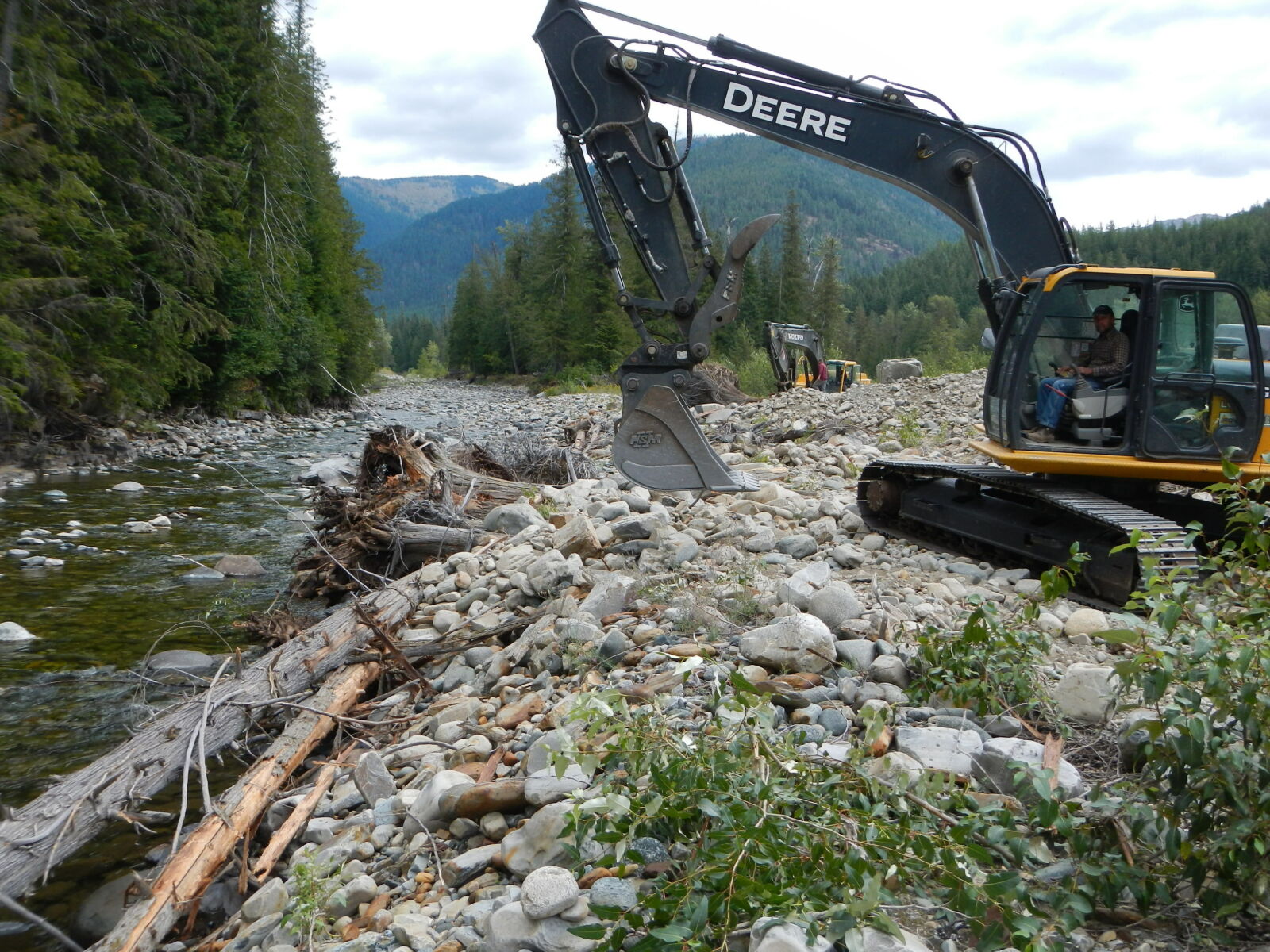Lightning Creek, on the Idaho Panhandle National Forest, is an important tributary to Lake Pend Oreille, and the watershed provides some of the best recreational opportunities in North Idaho. This area is one of our Treasured Landscapes, Unforgettable Experiences sites due to its ecological importance, recreational value, and its great need for integrated restoration. However, Lightning Creek is a dynamic place, and flooding in 2006 degraded riparian areas, damaged recreational infrastructure, and exacerbated threats to native fish species.
Studies showed that one of the things that could be done to restore and enhance fish habitat in the lower reaches of Lightning Creek was to add large woody material. Adding large wood to streams adds complexity, slows flow velocity, and is important to fish for spawning and rearing. Click here to read more reasons why wood in streams is important for fish.
So, in cooperation with the Forest Service, the National Forest Foundation partnered with Avista Utilities to put large wood back into Lightning Creek to enhance the habitat for the benefit of native bull trout and westslope cutthroat trout. This work to install log and rootwad structures (sometimes referred to as “engineered log jams,”) at 28 locations along Lightning Creek was completed this summer.

The work also included placement/planting of native willow and cottonwood fascines at three locations in the creek’s riparian zone. A fascine is a mat of living branches formed by laying branches in a crisscross pattern, several branches thick. This is then placed and secured in place to form what will become a living ground cover.
These enhancements will provide everyday benefits to fish, but in dynamic Lightning Creek, they will also literally be shelter in a storm. The large wood structures will provide channel stability and refuge for fish during periods of high flow, such as storm events and spring runoff. This added resilience to the watershed will have short-term and long-term benefits both upstream and downstream. And that’s no fish story!
For more information on this project, please contact Karen DiBari at [email protected]

